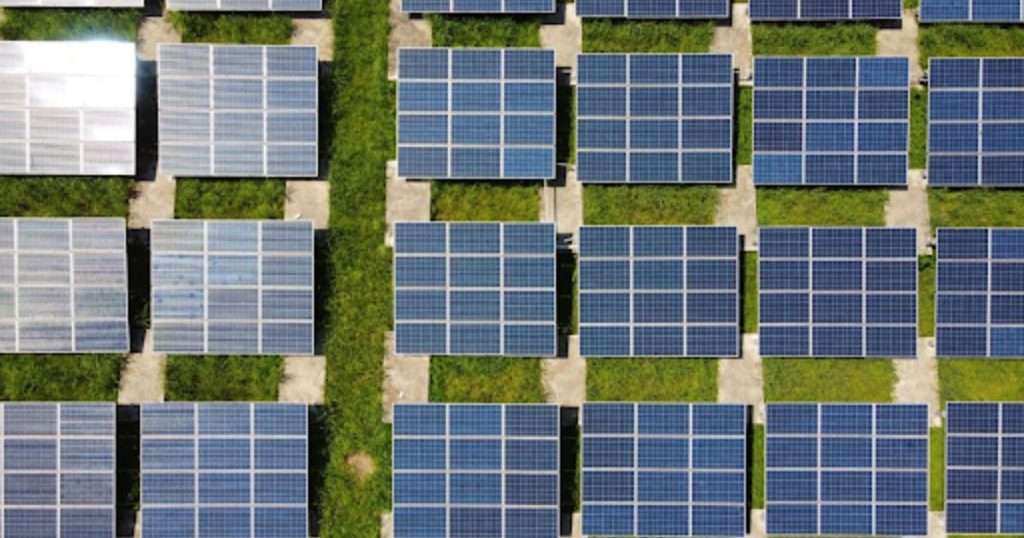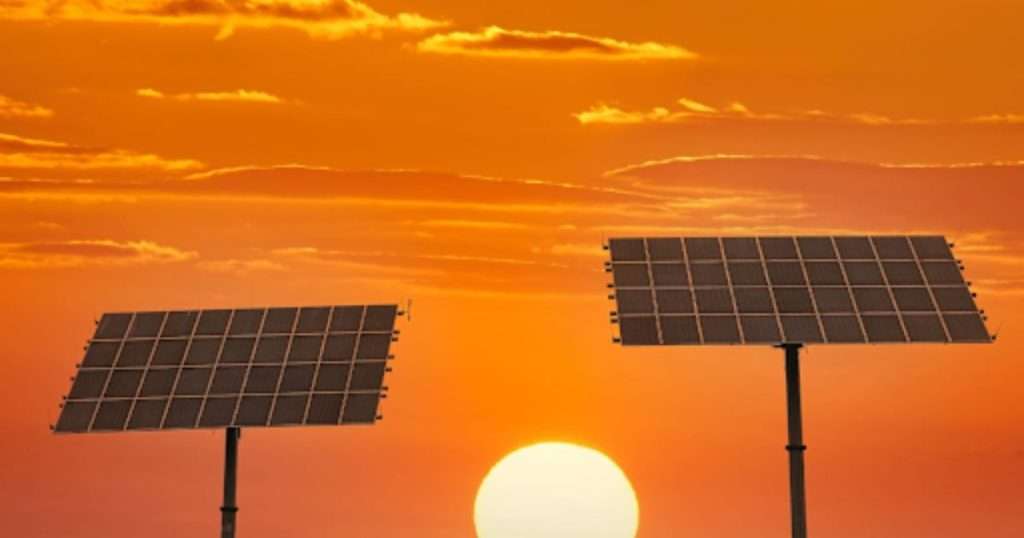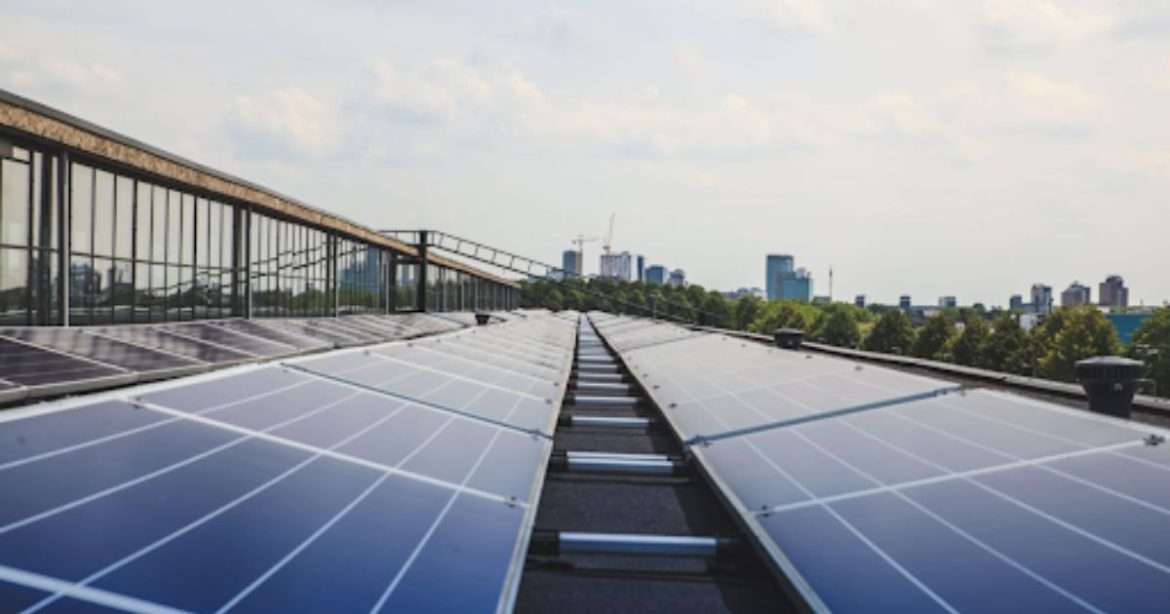Table of Contents
Types of solar farms differ in form and technology, yet each is beneficial for renewable energy. In an era of sustainable and renewable energy, solar power is a strong contender. Solar farms can turn the sun’s energy into electricity, offering optimism in the face of global energy demand shifts. This introduction prepares for a full look at the several types of solar farms, each adapted to individual energy needs and locations. The world needs clean, renewable energy more than ever. A sustainable solution to our expanding energy demands is solar stations, generally vast fields of photovoltaic panels or mirrored arrays. These farms have gone from scientific wonders to critical parts of our energy system.
This instructive tour will teach us about photovoltaic (PV) solar farms, concentrating solar power (CSP) farms, solar thermal farms, floating solar farms, and bifacial solar farms. These inventions each have their own benefits and uses, diversifying renewable energy alternatives. We know there are many elements that affect search engine results, but content quality is crucial. The major purpose of this blog is to explain solar farms. Explore types of solar farms now. Visit EcoTech’s solar co-op page for more information on different usage areas for solar cells.
1. PV Solar Farms
PV solar farms are famous solar projects. They immediately turn sunlight into energy. These farms generate power with photovoltaic panels.
PV solar farm benefits
- Energy conversion efficiency is high.
- Energy scalability.
- Domestic and industrial.
PV farms promote renewable energy. These solar systems use photovoltaic cells. They create power and symbolize sustainability. PV solar farms use solar cells. Silicon-based semiconducting cells absorb sunlight. When photons hit the cell, photovoltaics create power. The direct conversion of sunlight to energy is contemporary engineering. PV solar farms benefit from high energy conversion efficiency. With negligible energy loss, they turn sunlight into power continuously. This makes them perfect for sunny areas. PV farms may meet different energy needs due to their scalability. PV solar farms may match the needs of modest home installations or large industrial projects.
Maintenance and longevity
Low-maintenance PV solar farms are common. Once installed, they need just occasional cleaning to remove dust and grime from the panels. Many solar panels endure over two decades. They are cost-effective for long-term energy generation.
2. Concentrated solar farms (CSP) farms
CSP solar farms focus sunlight to generate energy. Mirrors or lenses direct sunlight onto a tower or pipeline holding a heat-transfer fluid in these farms. Steam turbines create power from concentrated heat.
Advantages of CSP solar farms
- High energy storage.
- Even amid clouds, reliable electricity
- Capable of large-scale power production.
CSP farms demonstrate human inventiveness in capturing solar energy. Farms use mirrors or lenses to concentrate sunlight, generating tremendous heat. Various methods generate power from this focused heat.
Mirror, farm mirror
Mirrors distinguish CSP solar plants. They can be parabolic troughs, linear Fresnel reflectors, or dish collectors. Each variety has its own benefits and uses. Parabolic troughs direct sunlight to a heat-transfer fluid receiving tube. Heat generates steam, which drives a steam turbine to create power.
High energy storage is a major benefit of CSP solar systems. These devices generate power even when the sun isn’t shining since the heat-transfer fluid retains heat. This makes CSP farms dependable, especially in cloudy places. CSP solar farms provide significant amounts of power. Concentrating sunlight on a tiny region produces high-capacity power. They are a good alternative for utility-scale energy projects that aim to power large villages or cities.

3. Solar thermal farms
Solar thermal farms are one of the types of solar farms. This type of solar farm uses solar thermal energy. They heat oil or water using flat-plate collectors or parabolic troughs that capture solar light. This heated fluid generates steam and electricity.
Solar thermal farm benefits
- Effective in sunny areas.
- Useful for water heating and power generation.
- Low maintenance.
Solar thermal farms use heat instead of electricity to collect solar energy. They work best in areas with constant direct sunlight. Solar thermal farms use flat-plate collectors and parabolic troughs to absorb solar energy and generate heat.
Flat-plate collectors
Flat-plate collectors are used in solar thermal farms. A selective coating enhances heat absorption on their dark, heat-absorbing surface. An insulated box with a transparent lid lets sunlight reach the dark surface. The collector transfers heat to oil or water. This heated fluid may heat water or generate power.
Parabolic troughs
Parabolic troughs are another solar thermal farm type. Big, curving reflectors resemble parabolic troughs. These reflectors direct sunlight to a heat-transfer fluid-filled receiving tube. Steam from concentrated heat powers a steam turbine to create energy. Flexibility is a benefit of solar thermal farms. They can heat water and generate power, making them versatile. As long as the heat-absorbing components work properly, solar farms require no maintenance.
4. Floating solar farms
A newer technology, floating solar farms place solar panels on water bodies like ponds, reservoirs, or the sea. Due to water cooling, these farms consume less land and are more efficient.
Advantages of floating solar farms
- Land efficiency, saving it for other uses.
- Reduced water evaporation.
- Cooling boosts energy production.
This renewable energy concept, floating solar farms, or “floatovoltaics,” seems promising. Solar panels float on water bodies like ponds, lakes, reservoirs, or the sea.
Energy production on water
Solar panels on water may seem odd, but they have several benefits. Land usage efficiency is a major benefit. Solar panels on water bodies save land for cultivation or conservation. This helps in solar project settings with limited land. Floating solar farms reduce water evaporation in the water they cover. The shade from the solar panels lowers evaporation by blocking direct sunlight. Water scarcity zones benefit from this since it conserves water. The cooling water on which the solar panels float boosts energy production. Solar panels work better at lower temperatures, and water cools them naturally. This boosts power generation over land-based solar arrays.

Environmental concerns
The environment benefits from floating solar arrays. They decrease algal development in aquatic bodies by blocking sunlight and increasing water quality. These installations can also support fish and other water species, boosting biodiversity.
5. Bifacial solar farms
Solar panels in bifacial solar farms catch sunlight from both sides. The ground or other surfaces reflect light into these panels, generating energy. They reflect sunlight on high structures.
Bifacial solar farm benefits
- Dual-sided light absorption boosts energy production.
- Performs well in different weather conditions.
- Installation flexibility.
Bifacial solar panels absorb sunlight from both sides, revolutionizing the solar business. This novel design boosts solar farm energy production and adaptability.
Two-sided light absorption
Conventional solar panels catch sunlight from the front. Bifacial solar panels capture sunlight from both sides. Light passes through the panel and hits the ground or other surfaces due to its transparent construction. Sunlight reflected back onto the panel’s back increases energy output.
Bifacial solar panels are suitable for solar farms due to their higher energy generation. They use space efficiently since they create more power per unit area.
Enhanced performance
Bifacial solar panels work well in certain climates. On cloudy days or indirect sunlight, ground-reflected light is beneficial. Bifacial solar farms can produce power at a decent capacity even under poor conditions.
Installation versatility
Bifacial solar panels are versatile in installation. You may put these panels on carports, awnings, or over crops in agrivoltaic systems. Elevation improves ground reflection, boosting energy production.
Conclusion
In conclusion, the types of solar farms let us pick the best one for our energy demands and location. Photovoltaic panels’ efficiency, CSP farms’ adaptability, solar thermal farms’ heat utilization, floating solar farms’ unique benefits, and bifacial panels’ increased energy production make solar power a sustainable energy source for the future. The global pursuit of solar energy drives innovation. Solar farms will become increasingly important in meeting our energy demands as sustainability and a better future become more important. These various solar farms demonstrate the sun’s endless energy potential, from Nevada’s deserts to Southeast Asia’s oceans. We may expect more astonishing solar energy discoveries as technology advances, bringing us closer to a sustainable and bright future. You now understand solar farm types and their benefits thanks to this post. The type of application area of your solar cells, depends on your energy needs and geography. Your investment in solar electricity helps create a more sustainable and eco-friendly future for future generations.
